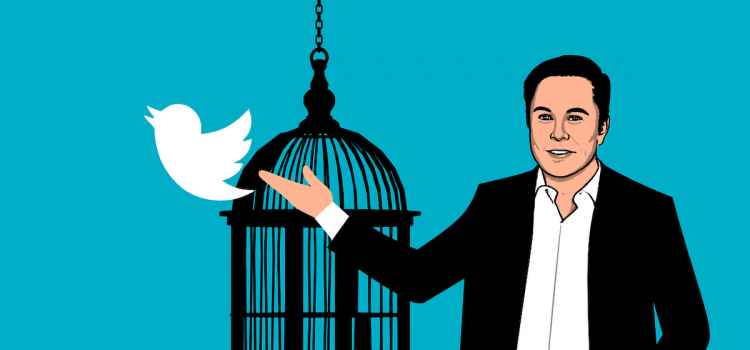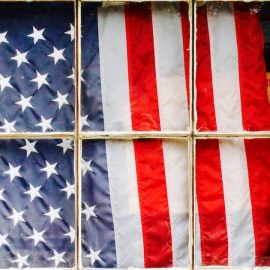
How has Twitter changed since Elon Musk purchased it? Why have many advertisers left the platform? Is it at risk of collapsing?
By taking over Twitter, Elon Musk triggered a seismic shift in the social media landscape. The culture at Twitter and Musk’s leadership style were diametrically opposed in almost every way, resulting in a clash of ideals that upended the character of the social media platform.
Keep reading to learn about Twitter under Elon Musk, according to biographer Walter Isaacson.
Twitter Under Elon Musk
In the days and weeks after the change in ownership, Twitter, under Elon Musk, saw its status quo disrupted when Musk laid off the majority of its staff, reframed its content and account-holder policies, and reinstated many banned accounts that had been blocked for violating Twitter’s previous rules.
Isaacson explains that, prior to Musk’s purchase, Twitter’s culture emphasized inclusivity, caring for employees, and psychological safety in the workplace—all of which went against Musk’s crisis-based, aggressive management style. The first thing Musk did was to have teams from SpaceX and Tesla evaluate Twitter’s software engineering department with an eye toward reducing the company’s size. Layoffs targeted inefficient coders, staff who were potentially disloyal to Musk, and anyone who wasn’t willing to maintain the frantic pace of work that Musk preferred. The latter round of layoffs was self-driven—Musk explained his workplace expectations and gave Twitter’s remaining staff the option to “opt in” or take severance.
| Different Takes on Workplace Culture Management literature is divided on how much psychological care and concern a business should devote to its workforce. In No Rules Rules, Netflix co-founder Reed Hastings backs up Musk’s position that employees should be treated as team members, not family members, and that workers who are merely “good enough” should be fired to make room for even stronger replacements. In Isaacson’s biography of Steve Jobs, he describes how the former Apple CEO managed from a similar mindset—he only wanted to employ top-tier talent who could keep up with his demanding nature while offering pushback on himself and their colleagues. The other side of the debate argues that security and empathy are needed for workers to safely give feedback and collaborate. In The Unicorn Project, Gene Kim describes workplaces such as the ones Musk creates as toxic and detrimental to productivity, while establishing psychological safety—the freedom to admit mistakes and fix them without blame or humiliation—as an essential cornerstone for collaboration and creativity. In Dare to Lead, Brené Brown agrees, stating that building trust and connection with your workers prevents defensive responses to criticism and encourages workers to grow and do better. Musk’s path is quicker—fire those who don’t perform and replace them as needed. |
Musk’s next move was to halt what he saw as Twitter’s censorship of free speech, but Isaacson says that Musk quickly learned that “free speech” isn’t a simple issue. As soon as Musk took over the platform, it was swarmed by online bots posting offensive content, testing the limits of what Musk would allow. Musk had his staff shut down the attack while he leaned into creating paid, verified accounts as a means to filter out bad-faith actors, but that strategy also proved problematic—users could pay for a verified account and then change their account after the fact to impersonate another person or business.
(Shortform note: Musk himself became the target of many of these impersonation attempts. Isaacson mentions one impersonation that was merely a parody stunt, but many other fake Twitter accounts used Musk’s name to trick unsuspecting victims into fraudulent cryptocurrency deals. One Florida school principal was almost bilked out of $100,000 in school funds by one of these Musk impersonators. A second round of impersonators flooded Twitter in April 2023 when Musk introduced Twitter Blue (now X Premium), replacing the previous identity verification system. Some impersonators are merely pranksters, while others are actively malicious.)
Addressing Twitter Censorship
Musk still believed that Twitter’s old content policies had gone too far in response to such misuse of the site. To prove it, he invited journalists to pore through Twitter’s moderation policies and records. They discovered that, not only did Twitter have a left-leaning bias, it had worked with the FBI to decide what information should be blocked or hidden. In some cases, Isaacson reports that this had gone beyond barring hate speech and misinformation to the outright silencing of voices that didn’t agree with mainstream thought.
(Shortform note: Twitter’s cooperation with the FBI is hardly an isolated incident, though the concern that many people voice is that of unwarranted government access to their personal information rather than censorship. A report made public in 2023 confirms that government agencies frequently buy users’ personal data from the same third-party dealers that collect information for marketing purposes. Nor is Twitter alone in being asked to block content. Google receives so many government requests to remove content from its apps that it publicly reports how many it receives and its policies for dealing with them case-by-case.)
Isaacson writes that, in November 2022, Musk began reinstating accounts—both conservative and progressive—that had been banned by Twitter’s previous management, including that of former president Donald Trump, of whom Musk wasn’t a personal fan. An unintended consequence was that advertisers started leaving the platform, cutting into Twitter’s bottom line. Musk didn’t help matters by making impulsive tweets of his own, some of which amplified conspiracy theories or targeted former Twitter employees. The damage done to Twitter’s brand started to spread to Musk’s other companies and his reputation. Musk realized that dealing with Twitter was negatively impacting his mental state, and buyer’s remorse began to set in.
(Shortform note: Branding experts argue that Musk’s most damaging act is his decision to change the name “Twitter” to X. The move can’t be completely surprising, as Isaacson repeatedly calls attention to Musk’s fondness for the letter X—as in X.com, SpaceX, and his son named X. However, Twitter’s branding and associated words such as “tweet” have entered the common vocabulary. Sometimes brands change their names to distance themselves from negative associations; however, if customers’ emotional attachment to a brand isn’t taken into account before the change, the business can suffer as a result.)
In Isaacson’s first-hand analysis of the Twitter takeover and its fallout, he suggests that Musk’s fundamental mistake was treating Twitter as a technology platform rather than a network for leveraging emotion. Musk tried to rebuild Twitter the way he’d design a rocket or a car—by cutting pieces off, seeing if it explodes, putting it back together, and trying again. This strategy worked well in Musk’s previous endeavors, but not so much in the realm of social media. Yet, though many outside observers have repeatedly predicted Twitter’s collapse, as of the time of this book’s publication, that still hadn’t come to pass.
(Shortform note: While Isaacson may be correct that Twitter’s collapse isn’t imminent, the Pew Research Center tracked several trends during Musk’s retooling of the company, such as the fact that 60% of US users planned to take a hiatus from the platform and questioned if they’d ever return. Those who remained Twitter users under Musk tended to use it less frequently than before, and partisan divides between users have grown wider. Quarterly revenue continued to drop through the first half of 2023. But, despite the loss of advertisers, total revenue remained higher than it was before 2020.)
Exercise: Consider Your Opinions About Twitter and Elon Musk
- Musk’s purchase and rebranding of Twitter has angered many of the platform’s long-time users. Has this affected you personally, and if so, how?
- How has Musk’s handling of the business changed or reinforced your feelings about him?

———End of Preview———
Like what you just read? Read the rest of the world's best book summary and analysis of Ashlee Vance's "Elon Musk" at Shortform.
Here's what you'll find in our full Elon Musk summary:
- A biography of Elon Musk by renowned biographer Walter Isaacson
- Musk's traumatic South African childhood up until his Twitter takeover
- How Musk's Asperger's syndrome affected his childhood and relationships






